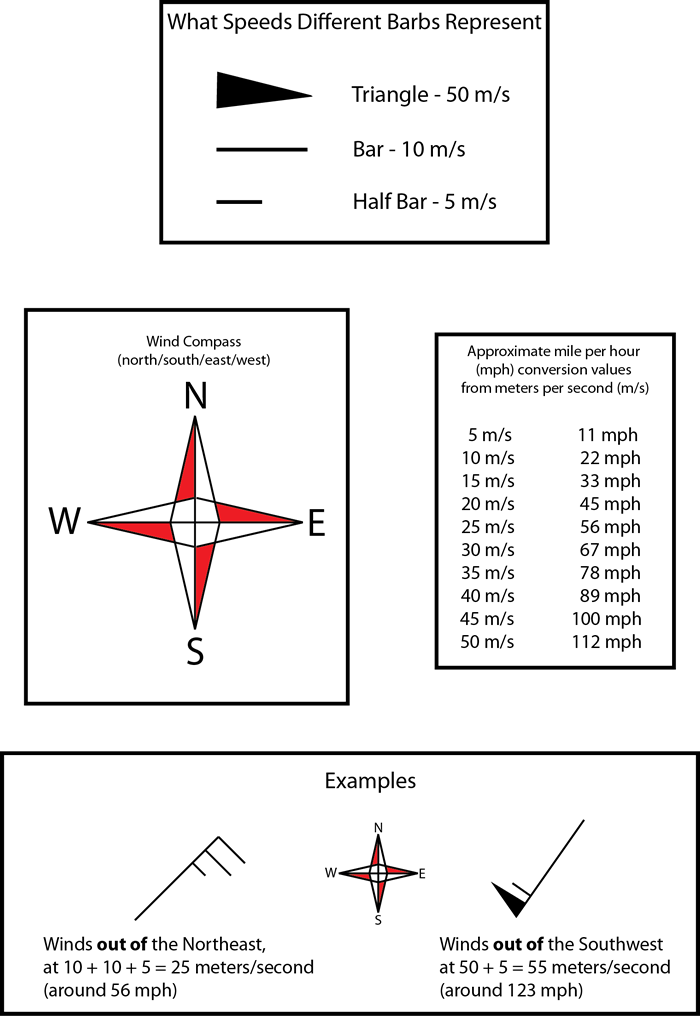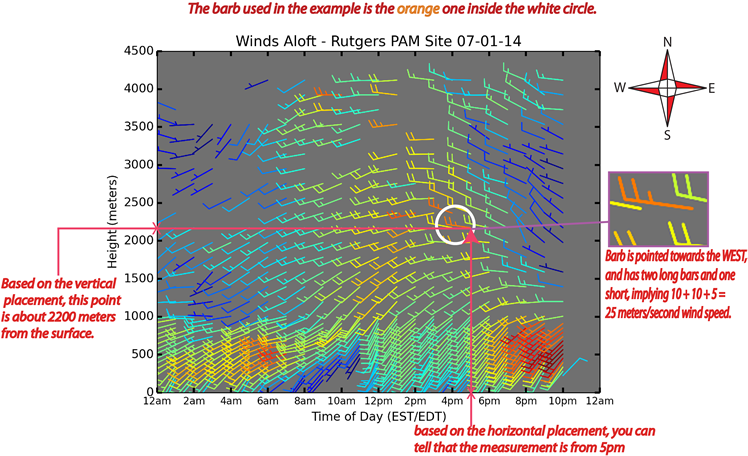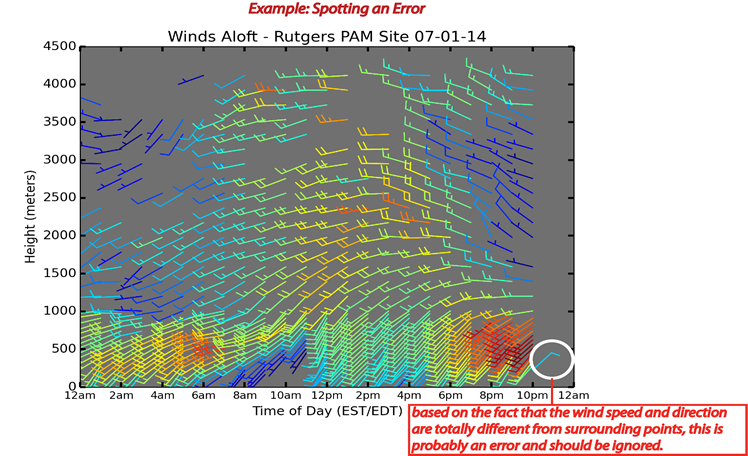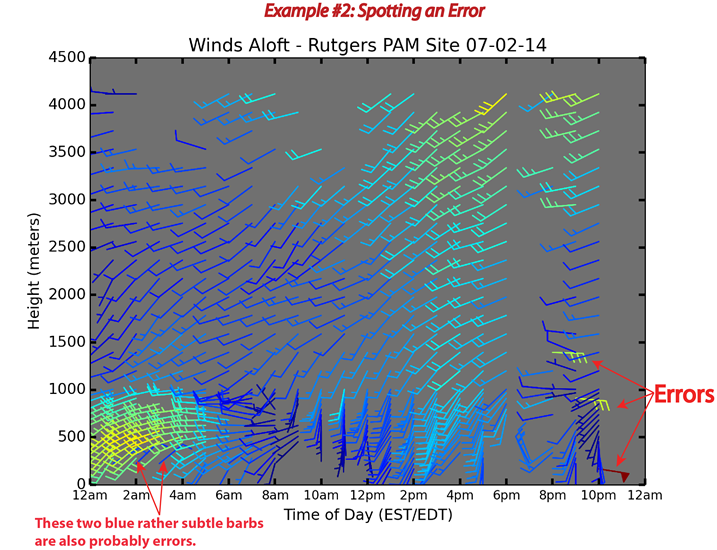Reading the Wind Profile Plot |
|
The wind profile plot shows hourly wind speed and direction at different levels in the atmosphere from ground-level up to around 4500 meters (~14,500 ft., or 2-3 miles) into the sky. There are many important pieces of information that can be gathered from this data, including evaluating temperature inversions, as well as watching different frontal features as they pass through the atmosphere above.
What is a wind barb?Each data point on the graph is represented by a wind barb. Wind barbs are a standard method of showing wind speed and direction in the atmosphere used by meteorologists all over the world.
|






